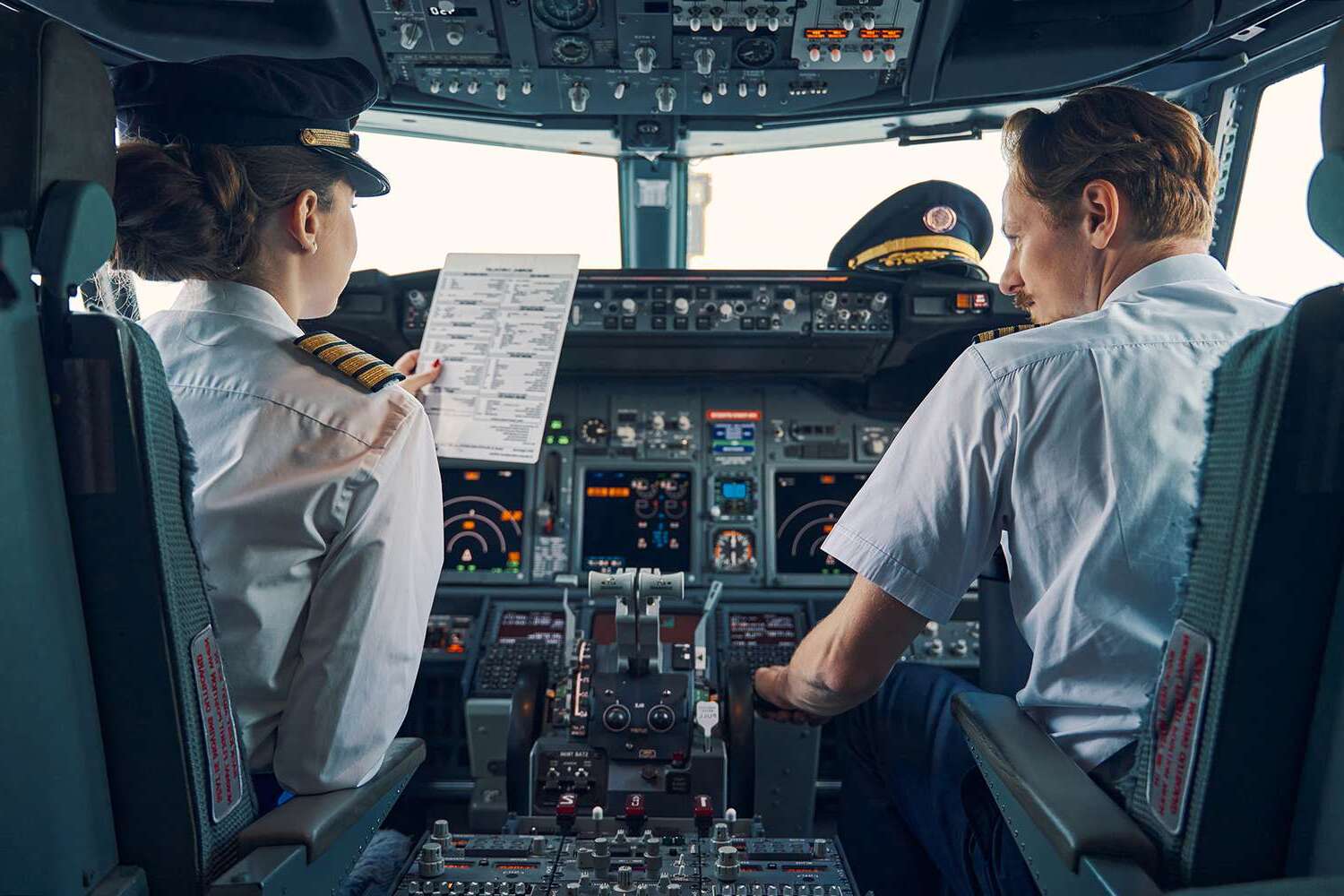
Ever wondered what it takes to become a pilot? Training to fly an aircraft isn't just about learning to navigate the skies. It involves rigorous education, physical fitness, and mastering complex systems. Pilot training demands dedication, discipline, and a passion for aviation. From understanding weather patterns to handling emergency situations, pilots must be prepared for anything. Aspiring pilots undergo extensive ground school, simulator sessions, and real flight hours. They also need to pass multiple exams and obtain various certifications. Curious about the journey from student to captain? Let's dive into 12 fascinating facts about the world of pilot training. Buckle up and get ready for takeoff!
Key Takeaways:
- Pilot training involves ground school, flight hours, and medical certification. Advanced training options include instrument rating, commercial pilot license, and multi-engine rating.
- Simulators play a crucial role in pilot training, offering cost-effective practice and real-world experience is essential for honing skills. Continuous learning and certification are vital for advancing a pilot's career.
The Basics of Pilot Training
Pilot training is a fascinating journey that transforms aviation enthusiasts into skilled aviators. Here are some intriguing facts about what it takes to become a pilot.
-
Ground School: Before flying, aspiring pilots must complete ground school. This involves learning aviation theory, meteorology, navigation, and regulations.
-
Flight Hours: To earn a private pilot license, one must log at least 40 flight hours. However, most students require around 60-70 hours to feel confident and competent.
-
Medical Certification: Pilots need a medical certificate from an aviation medical examiner. This ensures they are physically and mentally fit to fly.
Advanced Training and Specializations
Once the basics are mastered, pilots can pursue advanced training and specializations to enhance their skills and career prospects.
-
Instrument Rating: This allows pilots to fly in various weather conditions using only instruments. It requires additional training and flight hours.
-
Commercial Pilot License: To get paid for flying, a commercial pilot license is necessary. This involves more rigorous training and at least 250 flight hours.
-
Multi-Engine Rating: Flying aircraft with more than one engine requires a multi-engine rating. This training focuses on handling the complexities of multi-engine planes.
The Role of Simulators
Simulators play a crucial role in pilot training, offering a safe environment to practice and perfect flying skills.
-
Flight Simulators: These devices replicate real aircraft controls and environments. They are used extensively for training, especially for emergency procedures.
-
Cost-Effective Training: Simulators reduce training costs by allowing pilots to practice without using actual aircraft, which can be expensive to operate.
Real-World Experience
Gaining real-world experience is essential for pilots to hone their skills and prepare for various flying scenarios.
-
Cross-Country Flights: Pilots must complete cross-country flights, which involve flying to different airports. This helps them gain experience in navigation and flight planning.
-
Night Flying: Training includes night flying to ensure pilots can handle the unique challenges of flying in the dark.
Continuous Learning and Certification
Pilot training doesn't end with earning a license. Continuous learning and certification are vital to maintaining and advancing a pilot's career.
-
Recurrent Training: Pilots must undergo recurrent training to keep their skills sharp and stay updated on new regulations and procedures.
-
Type Ratings: For each new type of aircraft a pilot wants to fly, they need a type rating. This involves specific training for that aircraft's systems and handling characteristics.
The Final Approach
Pilot training is a fascinating journey filled with rigorous lessons, thrilling experiences, and immense dedication. From mastering aerodynamics to understanding weather patterns, every step is crucial. Aspiring pilots undergo extensive simulator training before they even touch a real aircraft. Flight hours are meticulously logged, and emergency procedures are drilled until they become second nature.
The path to becoming a pilot isn't just about flying; it involves mental resilience, physical fitness, and a deep understanding of aviation regulations. Instructors play a pivotal role, offering guidance and sharing their wealth of experience.
Whether aiming for a commercial license or dreaming of flying fighter jets, the commitment required is immense but rewarding. The sky isn't just the limit; it's a vast playground for those who dare to soar. So, if you're passionate about flying, embrace the challenge and take to the skies.
Frequently Asked Questions
Was this page helpful?
Our commitment to delivering trustworthy and engaging content is at the heart of what we do. Each fact on our site is contributed by real users like you, bringing a wealth of diverse insights and information. To ensure the highest standards of accuracy and reliability, our dedicated editors meticulously review each submission. This process guarantees that the facts we share are not only fascinating but also credible. Trust in our commitment to quality and authenticity as you explore and learn with us.


